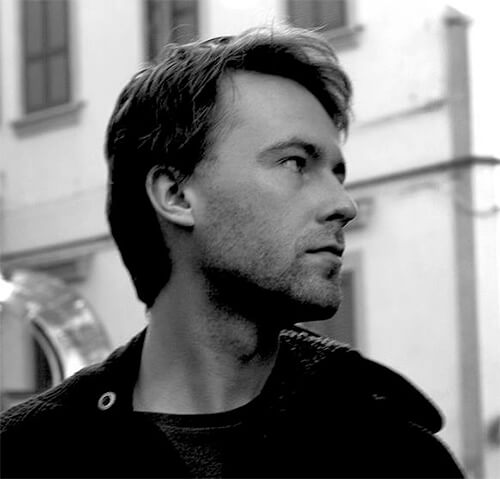Piotr Zbierski studied photography at National Film School. Author of three individual exhibitions (
White Elephants,
Here,
Love has to be reinvented), a participant in collective exhibitions and publications including
Photokina and
Lab East.
He presented his works in many countries like Poland, Germany, Portugal, Russia, Slovakia. As well as magazines (
Shots Magazine, Ninja Mag, Archivo Zine, Die Nacht, Gup Magazine). In 2012 he won the prestigious prize for young photographer
Leica Oscar Barnack Newcomer Award.
His work was nominated to Deutsche Börse Photography Prize and has been shortlisted in many other prizes (Les Nuits Photographiques 2012, Terry O’Neill Award) for his series Pass by me. His works has been shown at
Rencontres Internationales de la Photographie in Arles 2012 and are in collection of
Kiyosato Museum of Photographic Arts. He lives and works in Lodz.
About Love has to be reinvented
"The series 'Love has to be reinvented' began in 2012 and its starting point was not an image but my personal experience, which changed my view and redefined my opinion on many issues. At the same time, it is neither my diary nor any personal document; recently such a name is given to whatever cannot be named. Titles of my series are just mottos for my creative works at their particular stages. Words are created by letters in the alphabet, which is a matter of convention depending on the culture. I build my series out of emotions, which are a biological fact, they are unquestionable.
The key objective I identify for myself is the availability of a feeling. I really want the person looking at my photographs to experience something more and not just say whether photographs are good or bad. Photography does not begin with an image, it does not end with an image, either; I put on authenticity, and not on originality. An image is a form of communication of a higher art form, which is life itself. I took the title from the French poet, Artur Rimbaud, who wrote these words and expressed criticism of France and times he lived in about a hundred years ago. I returned to these words because I think the world has not changed so much, and I criticize a contemporary world, which has gone in the wrong direction, in my opinion. And I do not mean people but structures built around the castle, which the book hero has never reached.
A major objective of my work is to get through to the essence of human emotions, to their purest form with no additions, no gadgets. To show a man in the way he has been created, a man from a primeval village. In a contemporary world, such an image may be created using a certain type of imagination because we are very far away from such a status quo; therefore, my work is reality-based but it is not the reality itself. It is an attempt to invoke and depict certain human impulses with full acceptance of their inherent contradictions. Like love: it is as full of adoration as hatred; a day could not exist without a night. I will finish this three-year series in spring 2015 during the total solar eclipse, which can be observed in Iceland.
It is a characteristic clamp for my creative work in which I start from a personal, private and single experience at the very beginning, and come through an image to a part, which is common for us all, and independent of me. A macro-scale has its reflection in a micro scale while a normal scale, in which we live in, is its pulsating reflection. To follow theories of contemporary scientists, only a ballet dancer may be smaller, and on a macro-scale - a multiple universe.
Life is a film directed by the universe while the world is the largest accumulation of sensually available metaphors, a secret in secret or a metaphor in a metaphor. Rimbaud has also written that eternity is skies mixed with water; quite right: black and white, grey on grey; in a child's drawing huge blue and objectively sacred transparency. In my opinion, there is one reality and infinitely many visions. To sum it up as simple as I can: if the world is a tree growing more and more branches (metaphors), then life is the fruit. While love is the juice of various tastes in the same way as the resin is what a tree uses for weeping. All this happens in the surroundings of eternal gases where toxic ones come away leaving space to healthy ones. Rootstocks and roots grow expanding in the same way.
Who are people then?
Undoubtedly, they are savages from a primeval village who have learned what a real taste of love is: they adored each other at the expense of "god's" hatred, they are Adam and Eve. It is only owing to such a full image of love that new generations could come into existence. I also invite to see the video work titled "Lodz", in which I develop motifs I have earlier discussed. Another continuing video is in progress. The bottomless source is RGB without DNA." - Piotr Zbierski
